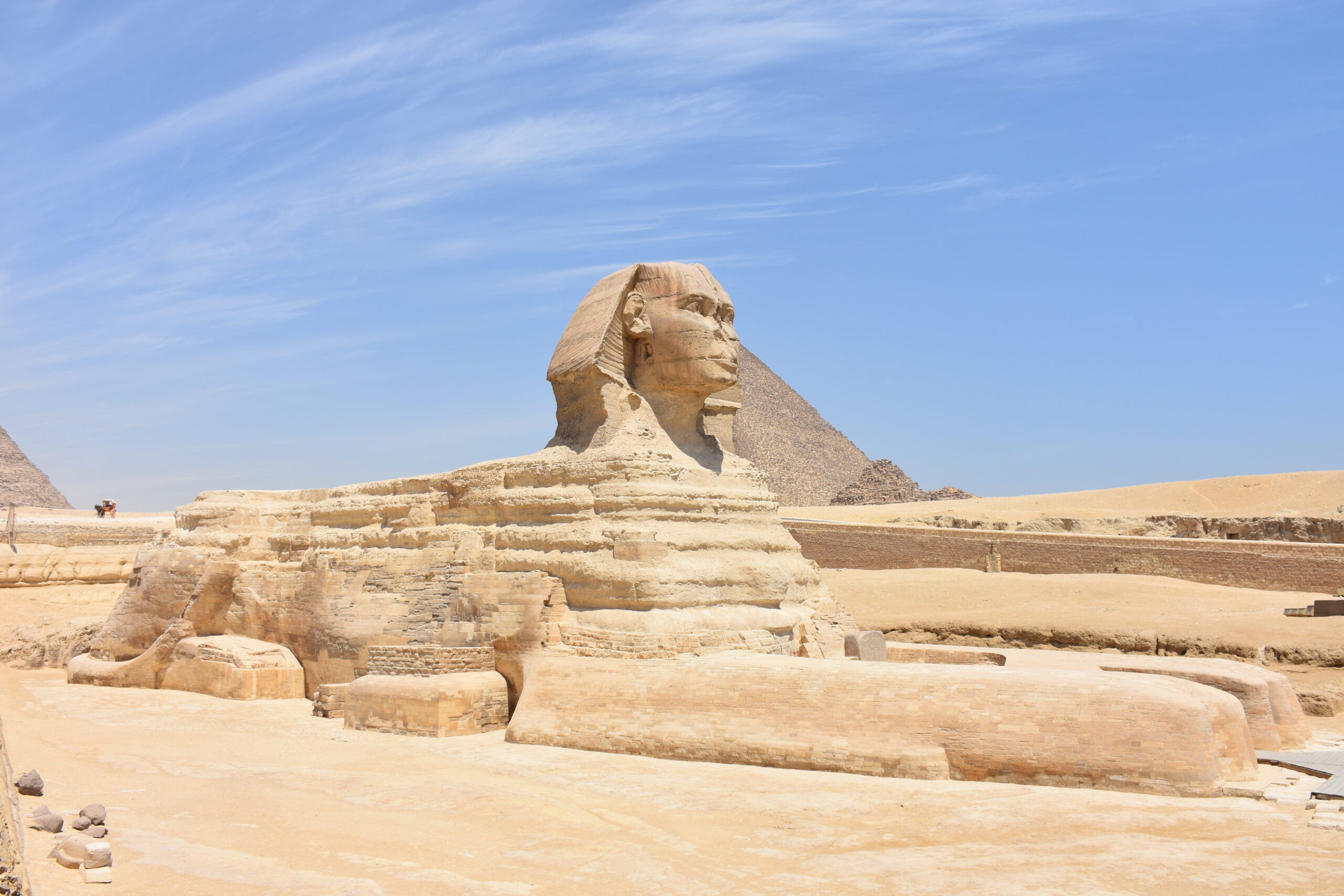The Great Sphinx of Giza, an iconic symbol of ancient Egypt, stands proudly on the Giza Plateau, just outside Cairo, Egypt. Carved from a single limestone block, this colossal statue represents a mythical creature with the body of a lion and the head of a human, believed to depict the pharaoh Khafre, who ruled Egypt during the Old Kingdom period, around 2500 BCE.
The Great Sphinx is one of the oldest and largest monumental sculptures in the world, measuring approximately 73 meters (240 feet) in length and 20 meters (66 feet) in height. Its imposing presence and enigmatic expression have captured the imagination of people for centuries, inspiring countless legends, myths, and theories about its origins and purpose.
The exact origins of the Great Sphinx remain shrouded in mystery, with scholars and archaeologists still debating its purpose and significance. While some believe that the statue was built as a symbol of royal power and divine authority, others suggest that it served as a guardian of the nearby pyramids and temples, protecting them from evil spirits and malevolent forces.
One of the most enduring mysteries surrounding the Great Sphinx is the question of its original appearance and purpose. Over the centuries, the statue has undergone numerous restorations and modifications, making it difficult to determine its original features and significance. Some researchers believe that the Sphinx was originally painted with vibrant colors and adorned with ceremonial headdresses, while others argue that it was used as a solar symbol, aligning with the sun’s movements and marking the passage of time.
Despite the mysteries surrounding its origins, the Great Sphinx continues to be a source of fascination and wonder for people around the world. Its serene expression and timeless beauty have inspired countless artists, writers, and filmmakers, who have sought to capture its majesty and mystery in various works of art and literature.
In addition to its cultural and artistic significance, the Great Sphinx also holds religious and spiritual importance for many people, who see it as a symbol of wisdom, protection, and divine guidance. Throughout history, the statue has been associated with various myths and legends, including the story of Oedipus and the Sphinx, which recounts the riddle posed by the creature to travelers passing through the ancient city of Thebes.
Today, the Great Sphinx of Giza remains one of Egypt’s most visited and celebrated tourist attractions, attracting millions of visitors from around the world who come to marvel at its grandeur and explore its mysteries. Guided tours of the Giza Plateau offer visitors the opportunity to learn about the history, symbolism, and significance of the Sphinx, as well as the ancient Egyptian civilization that built it.
Despite the passage of millennia, the Great Sphinx continues to stand as a testament to the ingenuity, craftsmanship, and spiritual beliefs of the ancient Egyptians, who created this magnificent monument to their gods and pharaohs. With its timeless beauty and enigmatic smile, the Sphinx remains a symbol of Egypt’s rich cultural heritage and enduring legacy, inspiring awe and wonder in all who encounter its majestic presence.



